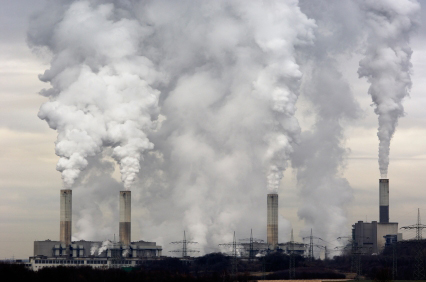A program to curb the increase of greenhouse gas emissions in China’s Guangdong province will probably be the largest of the nation’s seven test climate- protection systems,
according to Bloomberg New Energy Finance.
Guangdong is seeking to cut the amount of carbon emitted per unit of production in its economy by 19.5 percent in the five years through 2015, New Energy Finance said yesterday in an e-mailed research note. Other regions have lower targets, with Chongqing and Hubei set reductions of 17 percent.
“At this stage, Guangdong is the one to watch, as it has an ambitious target and the highest emissions out of the seven pilot regions,” said Richard Chatterton, an analyst at Bloomberg New Energy Finance in London. “The planned pilots are currently light on detail, but the programs are likely to fit alongside non-market policies, potentially preventing fully fledged cap-and-trade,” he said today by phone.
China, the world’s most populous nation and biggest emitter, is testing emissions-trading programs after global greenhouse gas output from fuel burning advanced 5.3 percent to a record 30.4 million metric tons in 2010, according to data published November by the International Energy Agency in Paris.
Guangdong has emissions of about 465 million tons of carbon dioxide, New Energy estimated, based on 2009 data. That’s compared with 397 million tons for France, U.S. Department of Energy data show.
The Beijing region has yearly emissions of 117 million tons, while the Shenzhen area emits 90 million tons, New Energy estimated. Annual gross domestic product growth varies widely across the seven, from 8 percent for Shanghai to 16 percent for Tianjin, it found.
Implementation Plans
The likely success of the programs in curbing greenhouse- gas output in the five years is so far difficult to judge, Chatterton said. “We’ll know more when the regions submit their implementation plans in 2012,” he said.
Asia Development Bank will help fund one of the pilot carbon-trading markets that may evolve into a nationwide cap- and-trade program.
ADB is providing a $750,000 equivalent grant to Tianjin municipal area’s pilot system, which may begin operation as early as next year, Manila-based ADB said today in a statement on its website.
The 1997 Kyoto Protocol, which set an emissions cap for more than 30 developed nations in the five years through 2012, was never ratified by the U.S. and does not require China and India, the world’s two most populous nations, to cut emissions. United Nations envoys have failed to decide how to extend or replace that agreement for the past 14 years.
Officials from almost 200 nations agreed on Dec. 11 at UN climate talks in Durban, South Africa, to seek a global deal by 2015, with the participation for the first time of the U.S., China and India.
By Mathew Carr – Jan 25, 2012






